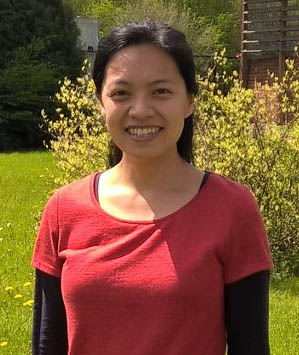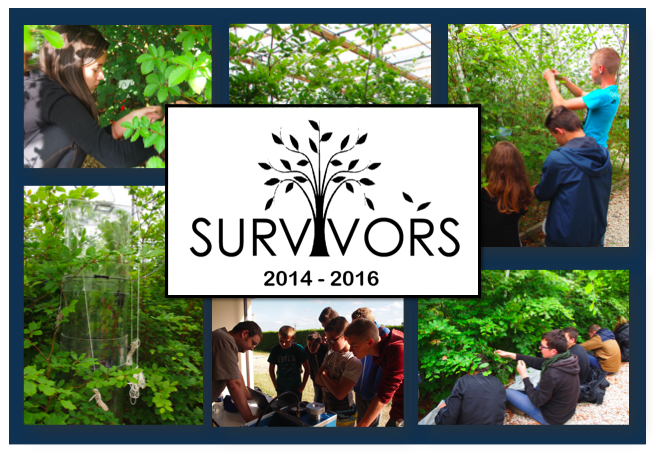

L’homogénéisation des écosystèmes forestiers et le déclin de la diversité des arbres réduisent la capacité des forêts à fournir des services écosystémiques essentiels tels que la production de bois ou le stockage de carbone. Un collectif de chercheurs européens impliquant l’Inra et le CNRS vient de publier dans la revue Proceedings of the National Academy of Sciences (PNAS) ces résultats qui s’appuient sur une approche de modélisation comparative des forêts de six pays européens.
Au cours des dernières décennies, les activités humaines ont conduit à l’extinction de nombreuses espèces au niveau local et mondial. Parallèlement, ces activités, comme les plantations agricoles et forestières, ainsi que les introductions et l’expansion d’espèces exotiques, ont également généré une homogénéisation croissante des écosystèmes à l’échelle mondiale, du point de vue de leur composition en espèces végétales et animales. Ce phénomène d’homogénéisation biotique est parfois qualifié d’« Effet MacDonald’s », par analogie avec les grands centres commerciaux dominés de manière croissante par un petit nombre d’enseignes franchisées, ce qui conduit à standardiser l’offre et à la réduire qualitativement. Dans les forêts européennes, le déclin de la diversité des arbres et l’homogénéisation biotique sont deux phénomènes très répandus. Cependant, alors que de nombreux travaux scientifiques ont étudié les conséquences de la disparition des espèces sur le bien-être humain, aucune recherche n’avait encore montré les conséquences de l’homogénéisation biotique sur la diversité des services écosystémiques, bénéfices générés pour les sociétés humaines par les écosystèmes.
Au travers d’un vaste projet collaboratif européen impliquant 29 équipes de recherche (FunDivEUROPE), les chercheurs ont combiné des données provenant de forêts de six pays (Allemagne, Espagne, Finlande, Italie, Pologne et Roumanie). Ils ont d’abord collecté une grande quantité de données sur différentes fonctions et différents services remplis par les écosystèmes forestiers. Ils ont ensuite utilisé des simulations informatiques pour tester les conséquences de l’homogénéisation biotique et du déclin de la diversité des arbres sur la capacité des écosystèmes forestiers à assurer seize fonctions essentielles telles que la production de bois d’œuvre, le stockage de carbone, la résistance aux bioagresseurs ou le maintien de la diversité des oiseaux.
L’étude montre que les effets du déclin des espèces d’arbres sont très variables alors que, dans presque tous les scénarios étudiés, l’homogénéisation biotique a un impact négatif sur la capacité des forêts à fournir des services écosystémiques multiples. Cela s’explique par le fait que toutes les espèces d’arbres ne fournissent pas les mêmes services avec la même intensité. Par exemple, dans les forêts polonaises, l’épicéa commun permet d’obtenir un bois d’œuvre de très bonne qualité, tandis que les forêts de charmes favorisent la présence d’une diversité de plantes favorable, par exemple, au développement d’un tourisme vert. Les paysages composés d’une diversité de forêts sont donc plus à même de fournir une gamme diversifiée de services écosystémiques que des paysages où les forêts sont dominées par les mêmes espèces d’arbres.
Ces résultats suggèrent que minimiser « l’Effet MacDonald’s », par exemple en prévenant l’invasion par des espèces exotiques ou en ayant recours à une plus grande diversité d’arbres pour les forêts de plantation, pourrait favoriser la multifonctionnalité des forêts, permettant ainsi de répondre à une triple exigence environnementale, économique, et sociale.
Pour en savoir plus ..
LE PROJET FUNDIVEUROPE
FunDivEUROPE (Functional Significance of Forest Biodiversity in Europe) est un projet collaboratif européen qui vise à quantifier le rôle de la biodiversité forestière dans le fonctionnement des écosystèmes et la fourniture de biens et services dans les principaux types de forêts européennes. Le consortium a rassemblé 24 institutions partenaires de 15 pays sous la coordination de l’Université de Freiburg (Allemagne). Le projet initié en 2010 a été financé par le 7e programme-cadre de l’Union Européenne (FP7). http://www.fundiveurope.eu









![visuel-AnaEE-france[596x265][transp]](https://mycor.iam.inrae.fr/ARBRE/wp-content/uploads/2016/06/visuel-AnaEE-france596x265transp.png)








